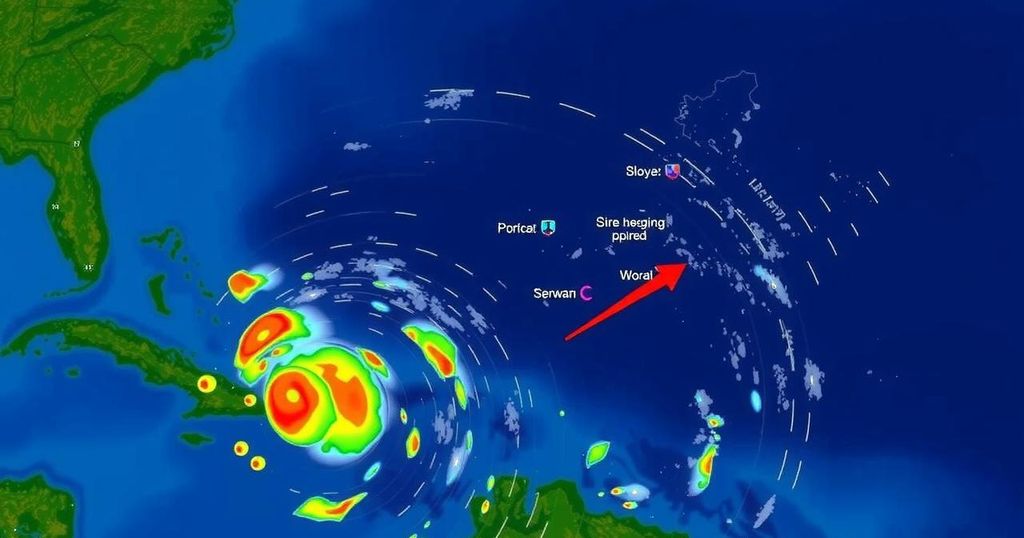2024 Atlantic Hurricane Season: An Overview of Storm Activity and Impact
The 2024 Atlantic hurricane season concluded with 18 named storms, including 11 hurricanes and 5 major hurricanes, closely aligning with NOAA predictions. Notable storms included Hurricane Beryl, the earliest recorded Category-5 hurricane, and Hurricane Helene, which resulted in significant fatalities. Despite below-average activity in the Pacific basins, NOAA’s improved forecasting capabilities were pivotal in managing the impacts of these storms.
The 2024 Atlantic hurricane season, which concludes on November 30, exhibited remarkable activity with a drastic increase following a traditional mid-season lull. A total of 18 named storms developed, including 11 hurricanes and 5 major hurricanes, aligning closely with NOAA’s pre-season predictions. This season was marked by significant landfall events, as five hurricanes affected the continental United States, two of which were classified as major hurricanes. The season’s aftermath includes record-setting storms with Hurricane Beryl being the earliest recorded Category-5 hurricane and Hurricane Helene recording over 150 fatalities, making it the deadliest hurricane since Katrina in 2005.
Additionally, Hurricane Milton intensified rapidly and resulted in extensive tornado outbreaks and severe flooding across Florida. Notably, NOAA’s advancements in hurricane forecasting were evident, producing historically accurate track forecasts; Hurricane Hunters contributed valuable atmospheric data, enhancing overall predictive capabilities. Despite the active Atlantic season, the eastern and central Pacific basins experienced below-average hurricane activity. As the season closes, NOAA continues to focus on understanding and predicting climatic and weather phenomena that significantly impact coastal communities.
The Atlantic hurricane season is an annual event that typically runs from June 1 to November 30, during which tropical storms and hurricanes develop in the Atlantic Ocean. NOAA’s Climate Prediction Center utilizes historical data and climate models to project the number of storms expected each season. In 2024, predictions indicated an above-average season after a typical mid-summer lull, leading to an extraordinarily active period late in the season with significant landfall impacts on the U.S. Gulf Coast. The advancements in forecasting capabilities by NOAA and the increased number of storms raised concerns regarding community preparedness and response, emphasizing the importance of continued research and effective emergency management.
In summary, the 2024 Atlantic hurricane season was characterized by an unexpectedly high number of storms and significant impacts across the United States. The season’s activity confirmed NOAA’s predictive capabilities and underscored the need for efficient disaster preparedness and response planning. The critical contributions of NOAA’s scientists and forecasters played a vital role in enhancing forecast accuracy and public safety during this tumultuous season. The ongoing research and technological advancements will be essential as we approach future hurricane seasons.
Original Source: www.noaa.gov




Post Comment